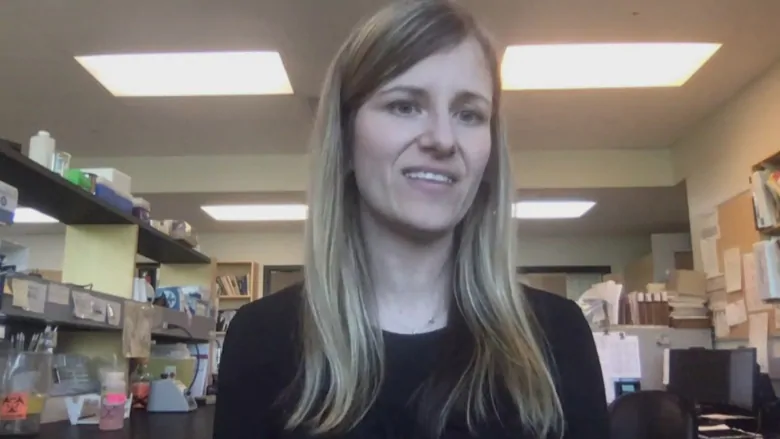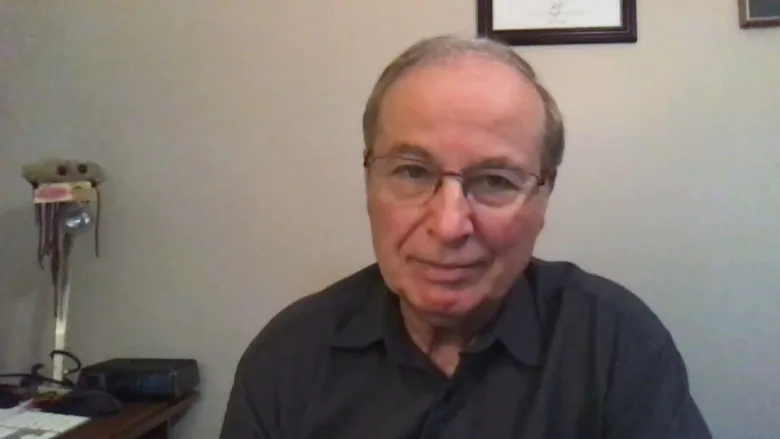The coronavirus that causes COVID-19 has been found in the feces of infected people. In one way, at least, it’s a good thing — it means testing sewage could potentially be a simple way to detect and track outbreaks, say researchers developing techniques to do just that.
“And so as opposed to testing every single person, we can actually test the waste water — the waste outputs of the entire population — to be able to see if it’s there,” said Natalie Prystajecky, environmental microbiologist with the BC Centre for Disease Control Public Health Laboratory and clinical assistant professor at the University of British Columbia.
“This is something that can serve as an early warning system to show that it is increasing in the population.”
Testing waste water could be used in a number of ways. It may provide:
-
Earlier warning than clinical tests or hospitalizations that the disease’s spread is growing in a given area or community, particularly when a second wave of the epidemic arrives.
-
A way to detect outbreaks at vulnerable institutions such as prisons or meat packing facilities without testing everyone there.
-
Evidence that testing isn’t reaching certain groups, or there is more asymptomatic spread than expected.
One study published in the journal Gastroenterology found that the virus was detectable in the stools of more than half of 73 COVID-19 patients tested. And 17 of those patients continued to test positive in their stools after showing negative results from nose or throat swabs. (There haven’t been any reports of the disease spreading through feces, and scientists think the risk is low based on studies of other coronaviruses.)
Not a new idea
Researchers in the Netherlands reported in an unpublished study posted online in March that the virus was detected in the waste water in the city of Amersfoort even before first COVID-19 cases were even confirmed.
The technique used to test waste water for the virus is very similar to the way individuals are tested for the disease using nasal swabs — in both cases, the test looks for genetic material from the virus in the sample.
Prystajecky and her colleagues are currently working on a way to adapt methods used for clinical testing for testing waste water.
It’s not a new idea — waste water testing has previously been used to track polio in India. Statistics Canada has also tested waste water to get a sense of illicit drug use across the country. And Prystajecky has studied the use of waste water to track the stomach bug norovirus.

While waste water testing for COVID-19 can potentially hit groups of people that are missed by clinical testing, it can’t diagnose individuals or give a very accurate count of how many people are infected. What it can show clearly is whether cases are increasing or decreasing.
“It’s really the trend,” said Prystajecky, noting that’s the information that will be important in the coming months or years when the world is expecting a second wave of infections, likely bigger than the first.
WATCH | Waste water samples point to where COVID-19 cases are:
Advantage of technique
Steve Hrudey is professor emeritus at the University of Alberta, who is co-ordinating a pilot project to assess the viability of a national COVID-19 waste water surveillance system through the Canadian Water Network.
“We’re wanting to have this in place before we run into any major second waves to assist the public health decision-makers in recognizing what’s happening early on and giving them another source of information that can help them make the tough decisions they must make.”
It can also provide a wider view than clinical testing, Hrudey said.
The advantage of this technique is that you’re basically collecting a composite sample from an entire population in one sample.… It will probably give us some advance warning of infection.– Steve Hrudey, professor emeritus at University of Alberta
“The advantage of this technique is that you’re basically collecting a composite sample from an entire population in one sample.… It will probably give us some advance warning of infection.”
Based on studies so far, he said, that advance warning could vary from several days to two weeks.
“This will sample from people who are pre-symptomatic, asymptomatic, people who aren’t being tested, who are still shedding the virus,” he said.

What needs to happen before deployment
That said, both Prystajecky and Hrudey said lots of research and development are still needed before waste water testing can be deployed on a wide scale for COVID-19 surveillance in Canada.
For one thing, there isn’t yet a standardized method for taking samples — where, when and how often, Hrudey said.
Prystajecky said such methods also need to be checked and validated.
“We first have to make sure we’re collecting samples the right way and we’re processing samples the right way,” she said.
She said that modelling is also needed to understand the data that’s produced. “We want to make sure people are interpreting the data in the proper way.”
She estimates it will take a couple of months before her team feels they have a “good valid test.”

Funding needed
Meanwhile, Hrudey is trying to make sure researchers studying this in different provinces exchange information so results can be compared. He’d also like the federal government to help validate results across the country and help standardize procedures.
Both researchers said funding is also needed to support the research.
“We’ve had encouraging feedback from various levels of government, so we’ll see one way or another some of this will be done,” Hrudey said. “It’s a question of how much we’re able to actually implement and how widely.”